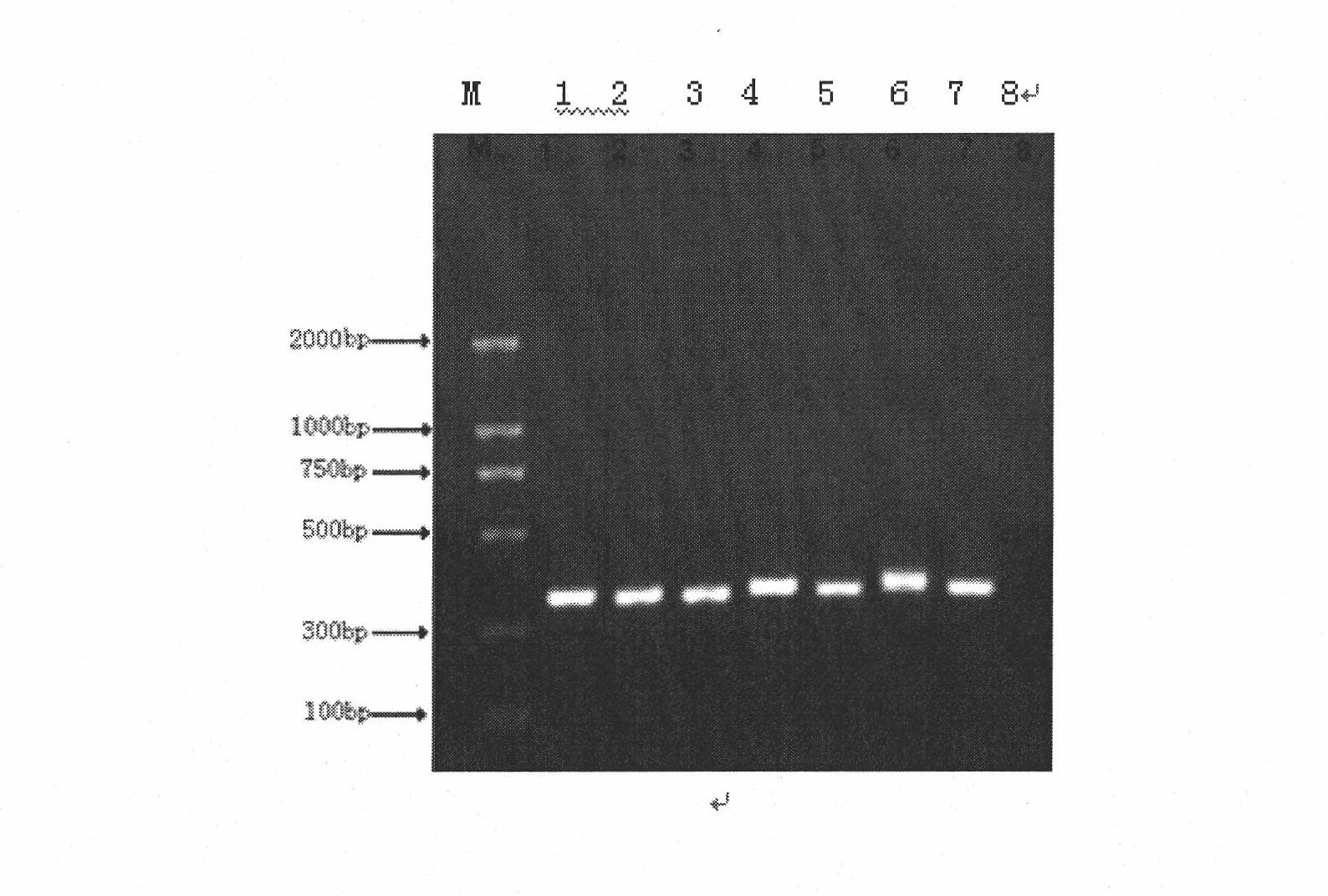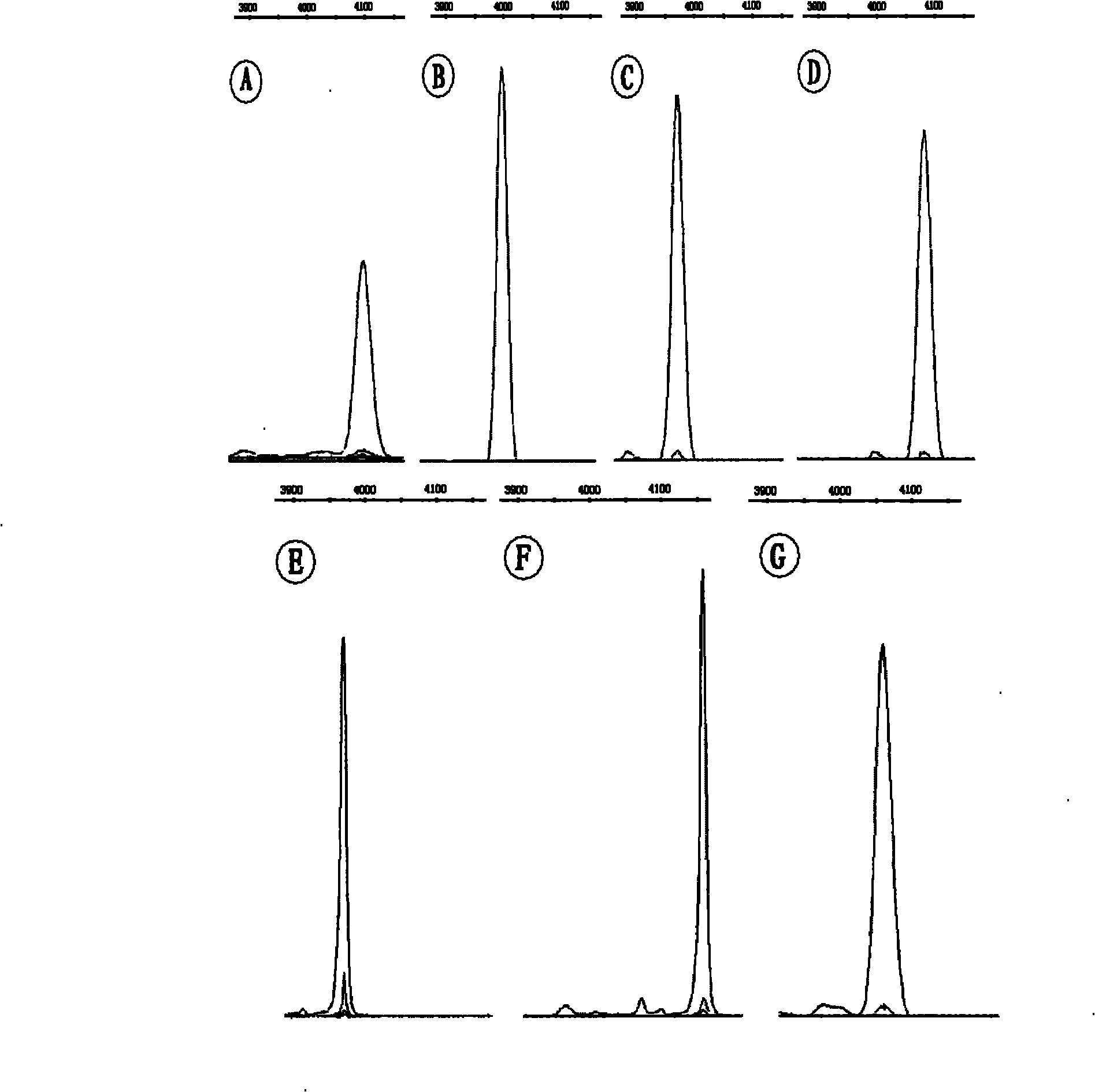Rapid detection method of blood pathogenic bacteria based on CE-SSCP (Capillary Electrophoresis-Single Strand Conformation Polymorphism)
A detection method and pathogenic bacteria technology, applied in the field of blood infection pathogenic bacteria detection, to achieve high sensitivity, good repeatability, and good specificity
- Summary
- Abstract
- Description
- Claims
- Application Information
AI Technical Summary
Problems solved by technology
Method used
Image
Examples
Embodiment Construction
[0030] Preferred embodiments of the present invention will be described in detail below. It should be understood that the preferred embodiments are only for illustrating the present invention, but not for limiting the protection scope of the present invention.
[0031] The blood pathogen rapid detection method based on CE-SSCP of the present embodiment comprises the following steps:
[0032] (1) Design general primers for Staphylococcus aureus, Escherichia coli, Pseudomonas aeruginosa, Staphylococcus epidermidis, Klebsiella pneumoniae, Enterococcus faecalis and Streptococcus pneumoniae, the operation is as follows: query the seven species respectively For the sequence of the 16S rDNA gene of the pathogenic bacteria, use ClustalX 1.81 software to perform multiple sequence alignments to find the conserved regions of the seven pathogenic bacteria, and then use Primer Premier 5.0 to design universal primers and perform fluorescent labeling. The universal primer sequence is: upstre...
PUM
 Login to View More
Login to View More Abstract
Description
Claims
Application Information
 Login to View More
Login to View More - R&D
- Intellectual Property
- Life Sciences
- Materials
- Tech Scout
- Unparalleled Data Quality
- Higher Quality Content
- 60% Fewer Hallucinations
Browse by: Latest US Patents, China's latest patents, Technical Efficacy Thesaurus, Application Domain, Technology Topic, Popular Technical Reports.
© 2025 PatSnap. All rights reserved.Legal|Privacy policy|Modern Slavery Act Transparency Statement|Sitemap|About US| Contact US: help@patsnap.com



